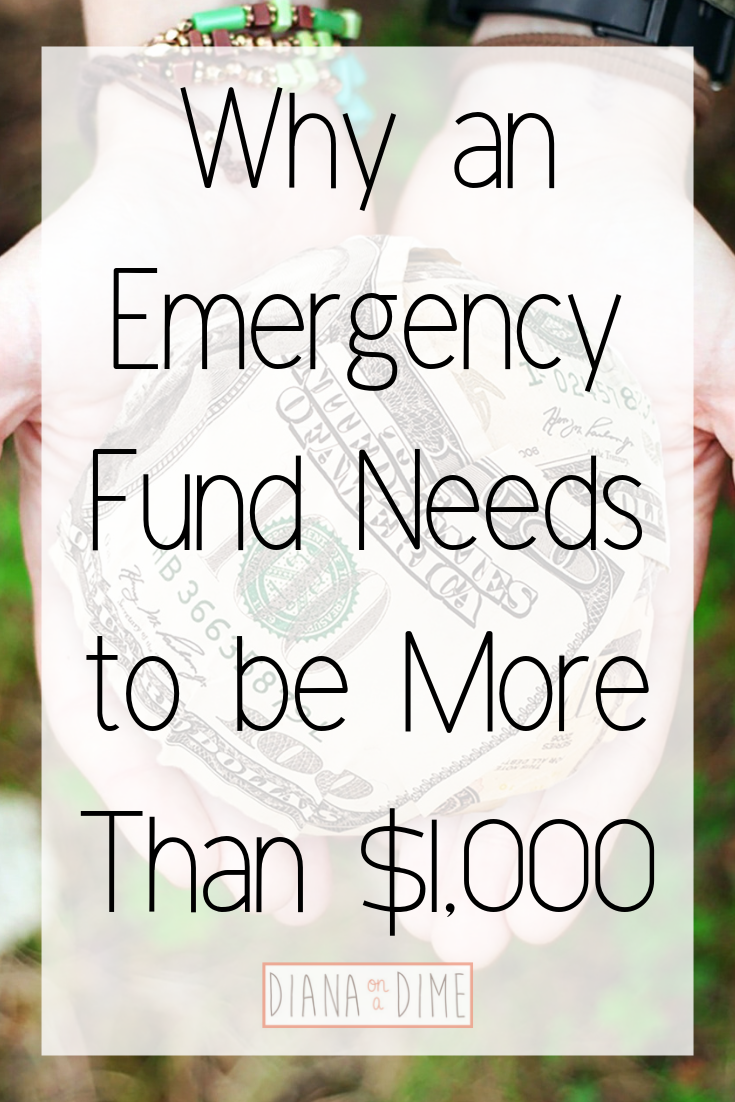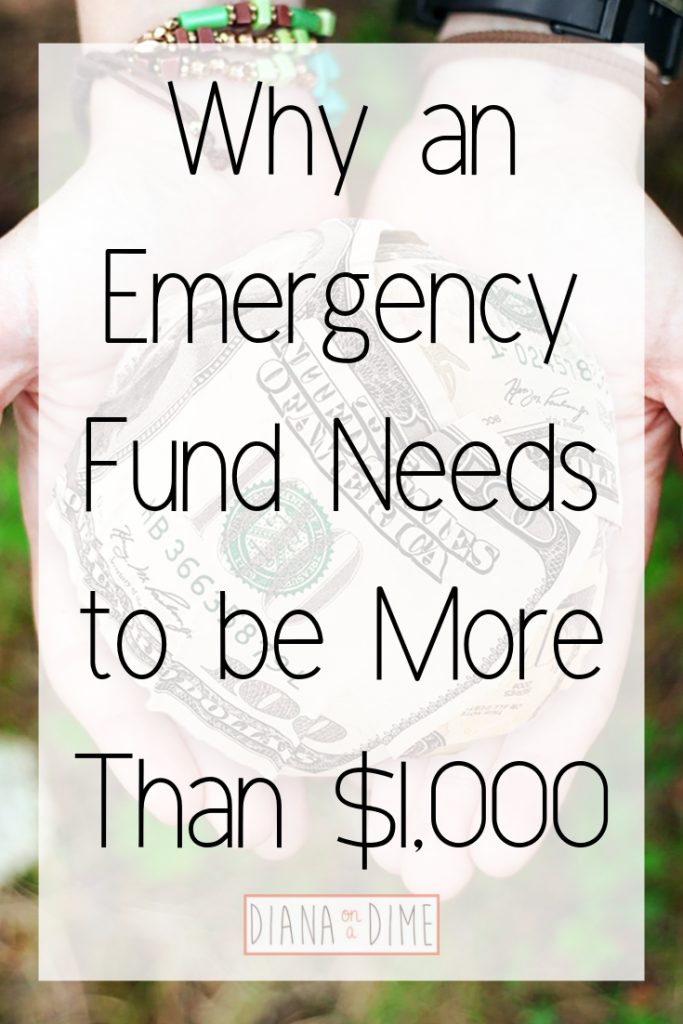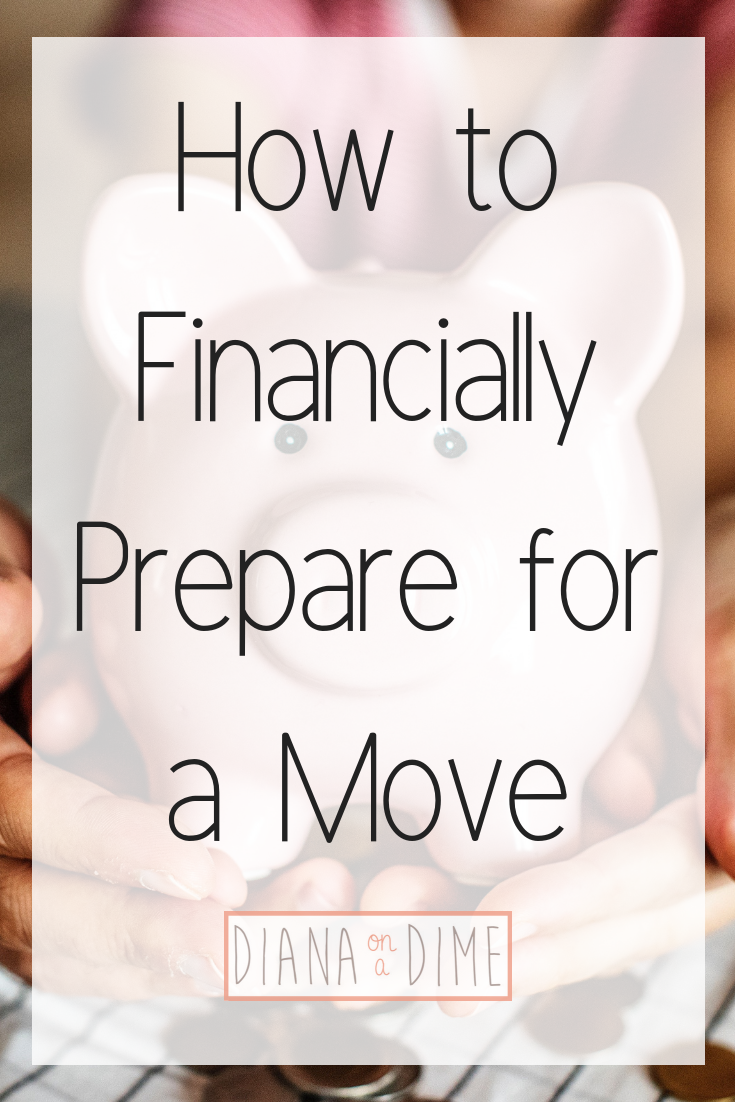Why an Emergency Fund Needs to be More Than $1,000
This post may contain affiliate links. Check out my Disclosure Policy for more information.
I know this is going to ruffle some feathers out there. The reality is that $1,000 in an emergency fund just isn’t enough. Cost of living in most places in the US, is just so much higher than this amount.
Realistically, you don’t touch your emergency fund much. I know for myself, I don’t really ever touch mine because I have sinking funds for most of the unexpected expenses that pop up. My emergency fund is truly there for job loss or serious health issues.
In both of these situations, $1,000 wouldn’t even come close to cutting it. My minimums just for my student loans are $1,100!!! I couldn’t even afford my debt minimums in the event that I lost my job.
Of course, this is why I encourage multiple income streams, but that’s not the point of this post. My point is that $1,000 isn’t going to support you in the event that you lost your job.
Everyone’s situation is vastly different, which is one of the biggest reasons that I don’t agree with a one number fits all dollar amount. Just depending on where you live, that number could be vastly different. It is dangerous to tell people a single number to work from because that could push someone into financial ruin.
This is especially true if you have large non-mortgage debt, like I did and continue to pay off. You’re not in a situation where you’re going to pay off your debt in a year. Unless you hit the lottery or something!
Those of us with large debt especially need to have more than $1,000 saved for emergencies. I encourage 1 month of expenses at first.
Depending on your situation, you may want to consider adding to your emergency fund while paying off debt. If you own a home, have children, have an unpredictable job, or any other situation that requires money unexpectedly, add more to it.
I’ve been paying off my student loans for almost 4 years. I still have $67k left. When I lived at home, I had a small emergency fund of $1,000 with my sinking funds. My expenses were very small and almost all of the unexpected expenses would be covered by my sinking funds.
Now, I have moved out of my parent’s house and I have been increasing my emergency fund every month. I plan to continue adding to it until I have 3 months of expenses saved.
Even though that money could be going to debt, I would feel much more secure knowing I have money set aside for emergencies. The reality is that it isn’t a case of if an emergency happens, it’s when an emergency happens. By having more set aside, it allows you to more easily tackle your debt.
You may think it is counter productive to have an emergency fund of thousands of dollars set aside when you still have debt. I definitely felt that way for a bit of time. Mostly because I just wanted my student loans gone so badly.
But, once you have that emergency fund set, it allows you to easily make extra debt payments because you’re prepared for something that comes your way. The stress of what if, doesn’t stop you from putting your extra money to your debt.
If you’re trying to figure out how to build your emergency fund while paying off debt, my budgeting template helps you to do this. It has a section for income, expenses, and savings. Creating an emergency fund is so important and it absolutely deserves a line in any budget until it is full.
When you have an emergency fund set, you are free to put as much money as you want to debt. So, how much do you have in an emergency fund while you pay off debt?





